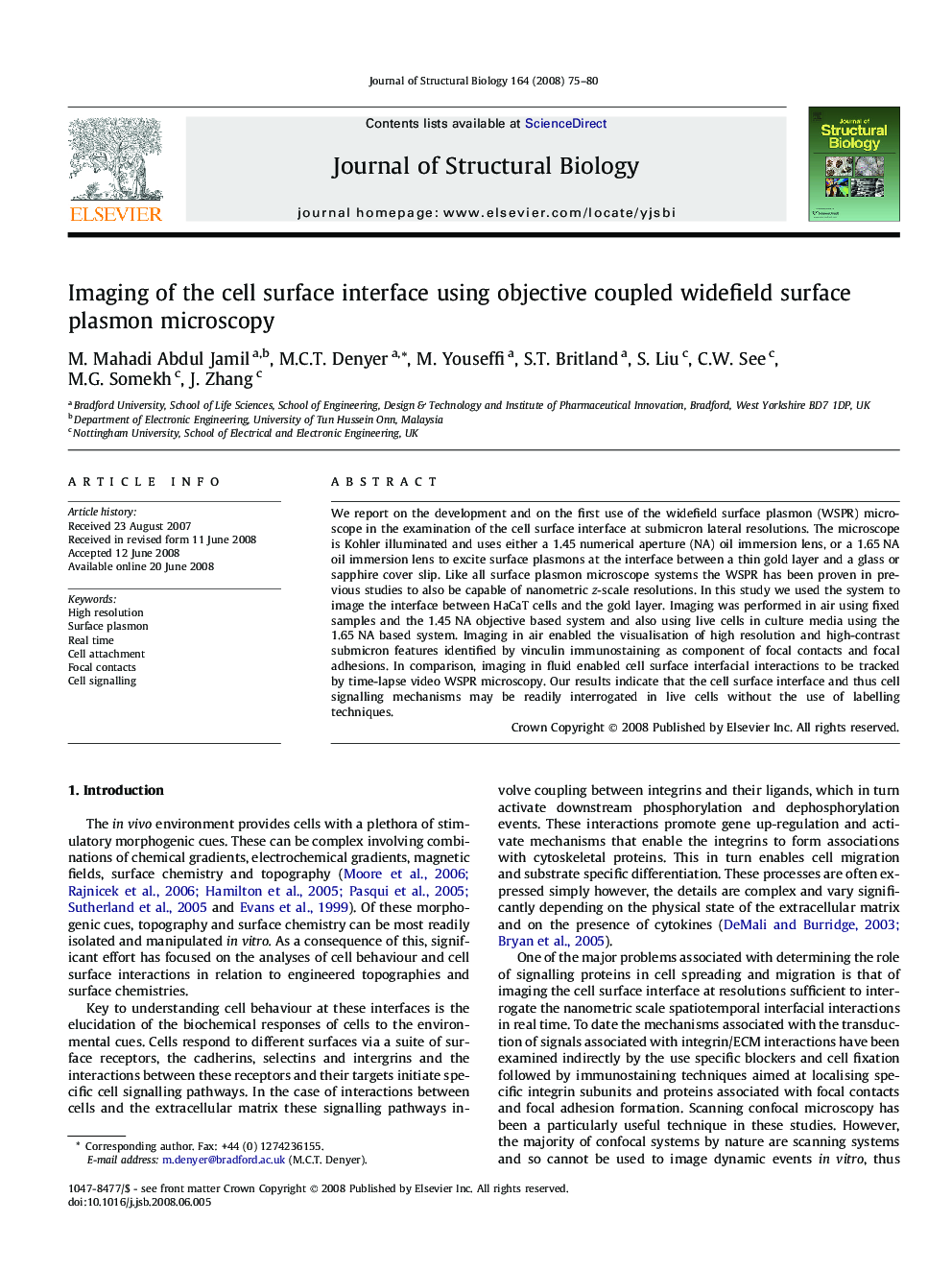| Article ID | Journal | Published Year | Pages | File Type |
|---|---|---|---|---|
| 2829083 | Journal of Structural Biology | 2008 | 6 Pages |
We report on the development and on the first use of the widefield surface plasmon (WSPR) microscope in the examination of the cell surface interface at submicron lateral resolutions. The microscope is Kohler illuminated and uses either a 1.45 numerical aperture (NA) oil immersion lens, or a 1.65 NA oil immersion lens to excite surface plasmons at the interface between a thin gold layer and a glass or sapphire cover slip. Like all surface plasmon microscope systems the WSPR has been proven in previous studies to also be capable of nanometric z-scale resolutions. In this study we used the system to image the interface between HaCaT cells and the gold layer. Imaging was performed in air using fixed samples and the 1.45 NA objective based system and also using live cells in culture media using the 1.65 NA based system. Imaging in air enabled the visualisation of high resolution and high-contrast submicron features identified by vinculin immunostaining as component of focal contacts and focal adhesions. In comparison, imaging in fluid enabled cell surface interfacial interactions to be tracked by time-lapse video WSPR microscopy. Our results indicate that the cell surface interface and thus cell signalling mechanisms may be readily interrogated in live cells without the use of labelling techniques.
